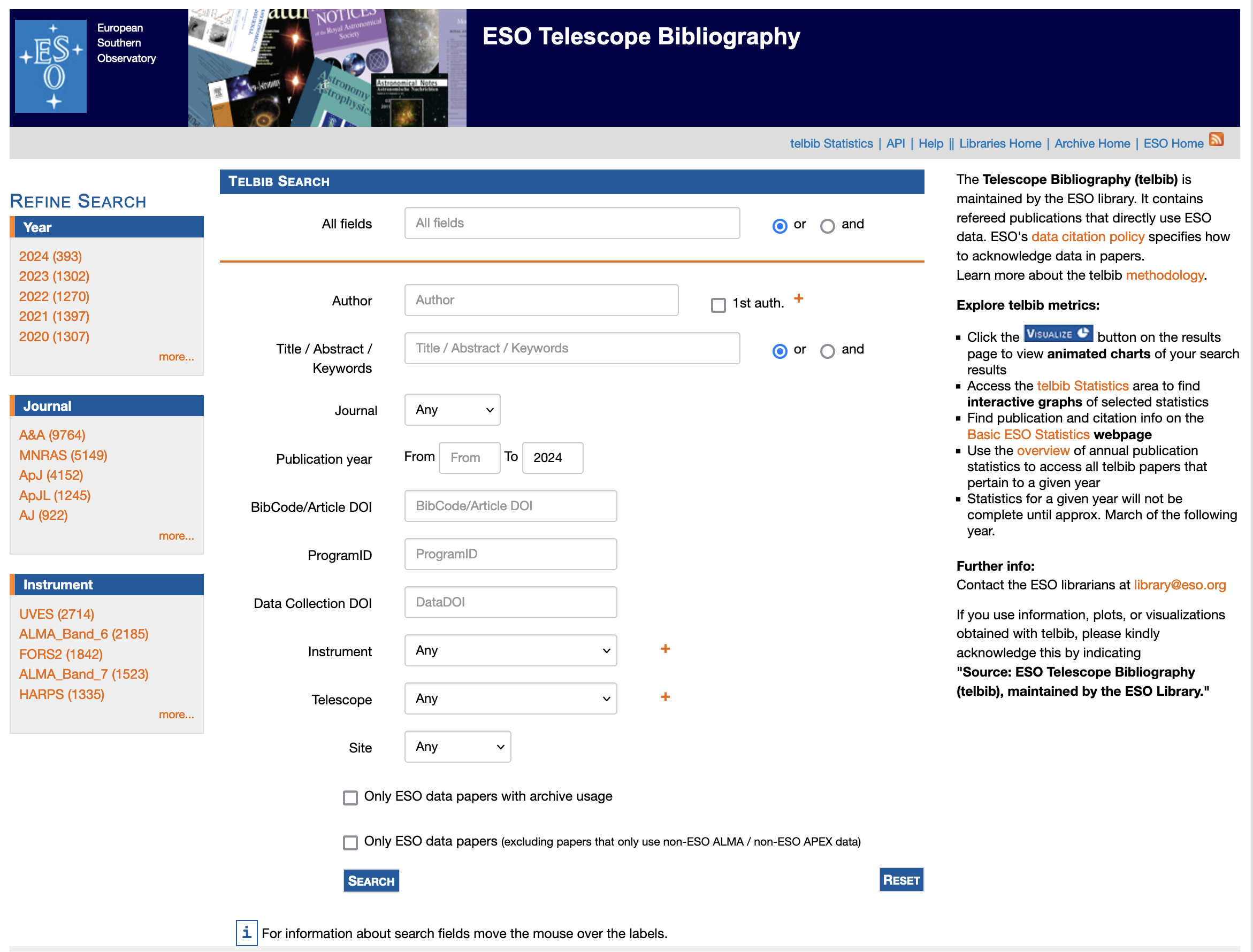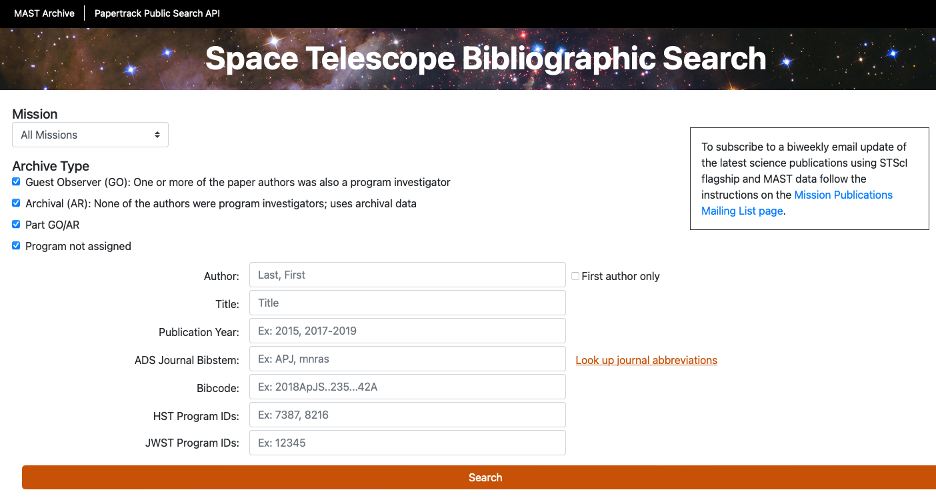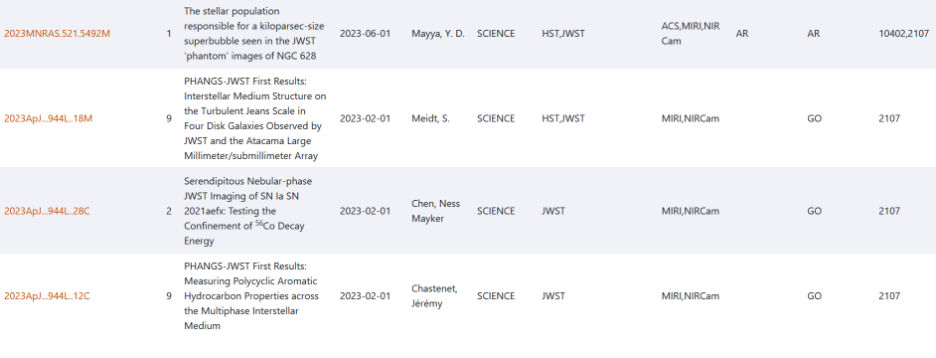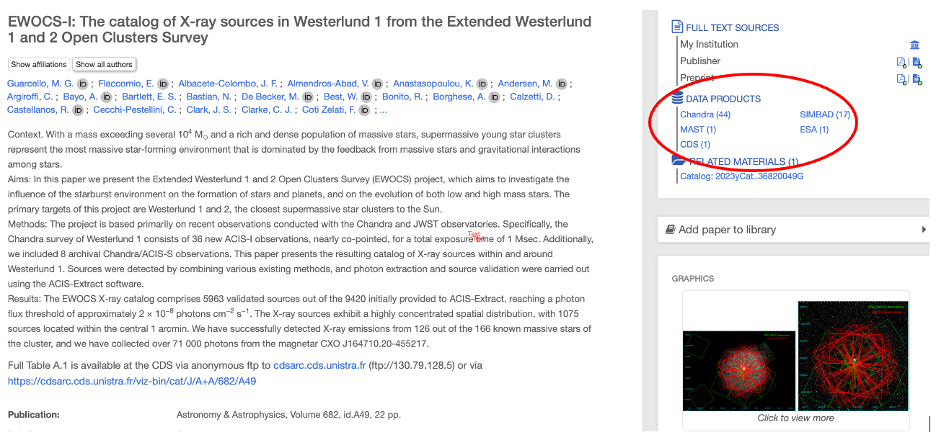
The European Southern Observatory's (ESO) Telescope Bibliography (telbib) is maintained by the ESO library. It contains refereed publications that directly use ESO data and is the basis for metrics and visualizations that help characterize telescope data use over time.
https://telbib.eso.org/
An observatory bibliography consists of the refereed science papers published using that observatory's data or data product(s).
Science papers are defined as publications using data or data product(s) from the observatory to form the basis for reaching a new scientific conclusion. Papers that contain previously published data are included in the bibliography as long as the way the results are presented constitute new analysis or use.
Observatory Bibliographers
- Search the scientific literature, often by utilizing ADS for manual searching or through the ADS API.
- Assess publications for inclusion based on parameters outlined in institution's data citation policies and in bibliographer community's best practices.
- Assess each publication manually to determine program(s)/data used, facility, instrument, dates, and more.
- Assign metadata, which must be continually reviewed to account for changes in concepts, programs, and institutional goals.
- Make bibliographies and metrics publicly accessible through ADS bibgroups and public libraries, and through institutional websites.
- Provide publication data and metrics for reports to leadership and funding agencies.






